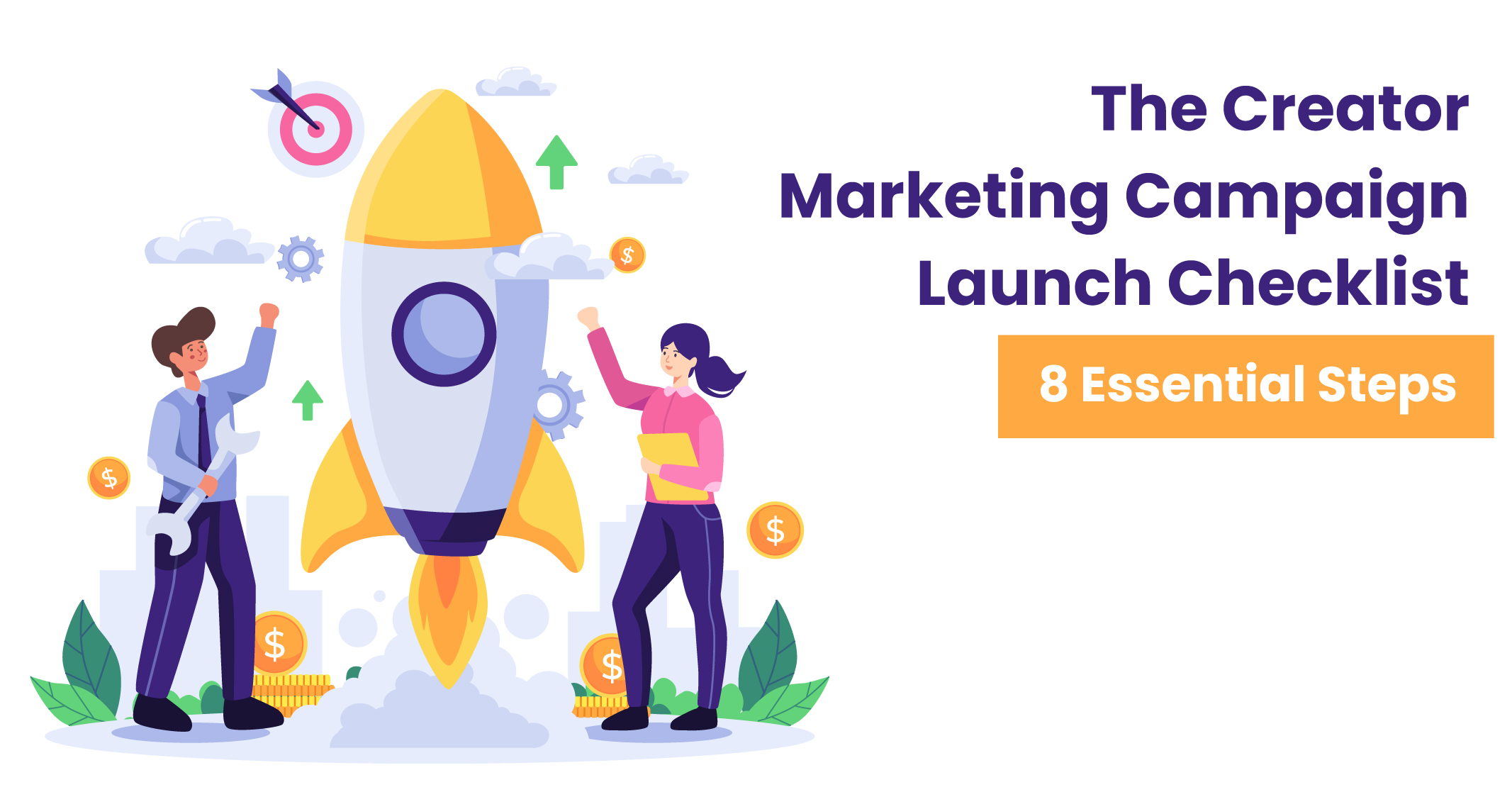I hope you enjoy reading this blog post.
If you want to get more traffic, Contact Us

Click Here - Free 30-Minute Strategy Session
Be quick! FREE spots are almost gone for this Month. Free Quote

Creator marketing leverages partnerships with influencers, content creators, or niche market authorities to enhance brand visibility. It revolves around authentic endorsements that resonate deeply with target audiences. Companies must recognise the significance of identifying creators whose values align with their own. This ensures consistent messaging that feels genuine and relatable.
Key considerations include determining campaign objectives, knowing audience demographics, and choosing suitable platforms. Brands should also prioritise real engagement over superficial metrics like follower count. Fostering trust between the creator and audience builds credibility, establishing the foundation for long-term collaboration. Thoughtful planning sets the stage for impactful, data-driven campaigns.

Click Here – Free 30-Minute Strategy Session
Be quick! FREE spots are almost gone for this Month
Establishing precise goals and objectives is crucial to shaping the direction of any creator marketing campaign. Goals should align with the overall business strategy and address specific needs, such as increasing brand awareness, driving sales, or boosting audience engagement. Objectives must be measurable, realistic, and time-bound to ensure tracking progress effectively.
When defining goals, marketers should consider metrics like reach, conversions, and interactions. Collaborating with creators requires clear communication about desired outcomes to guarantee alignment. A well-defined framework enables monitoring campaign success and adjusting strategies as necessary to achieve desired results. This clarity improves focus and minimises potential misunderstandings.
Selecting the right creators is essential to align brand values and messaging with audience expectations. Begin by defining the target audience and the type of engagement desired. Analyse potential creators by reviewing their content style, audience demographics, and engagement metrics to ensure compatibility with the brand ethos. Look for creators who are authentic and consistent in their communication. Evaluate their track record to ensure credibility and professionalism.
Collaborate with creators who share similar values and passions to build genuine connections. Use tools like influencer platforms or social media analytics to streamline the process and identify ideal candidates efficiently.
An effective content strategy begins with identifying the target audience. Creators must tailor their messaging to resonate with the specific needs, interests, and preferences of this group. Market research and audience insights can guide these efforts.
Key elements of an engaging strategy include consistent branding, storytelling, and diverse content formats such as videos, blogs, or interactive posts. Aligning content with current trends and platform algorithms helps maximise visibility.
A content calendar enables creators to schedule posts strategically, maintaining a constant online presence. Incorporating user feedback and performance analytics ensures continuous improvement and relevance. Ultimately, compelling content fosters trust and audience loyalty.
Establishing clear contracts and agreements ensures creators and brands are aligned on expectations, deliverables, and timelines. Contracts should include specifics like payment terms, content usage rights, deadlines, and performance metrics. This protects both parties and prevents misunderstandings during the collaboration.
Brands should clearly define exclusivity clauses, if applicable, and intellectual property rights to safeguard their interests. Creators should also confirm transparency regarding disclosure requirements, such as marking sponsored posts. Regular communication is essential to address potential discrepancies early. Using standardised templates can simplify the contracting process while ensuring all essential details are covered comprehensively.
A well-structured campaign timeline ensures all activities are synchronised for effective execution. Mark key milestones such as content creation, approval processes, launch dates, and performance reviews. Establish deadlines for creators and coordinate communication to ensure timely delivery. Incorporate contingency buffers to address unexpected delays or changes. Define the launch plan by mapping out platform-specific rollouts, considering audience behaviour and peak engagement times. Include promotional activities such as teasers, email campaigns, or collaborations to amplify reach. Streamline the timeline with tools like project management software to enhance organisation. Regularly evaluate progress to keep the campaign on track and adaptable to real-time feedback.
Effective measurement begins by integrating robust tracking tools to gather actionable insights. Use analytics platforms to monitor website traffic, conversion rates, and engagement metrics. Selecting tools tailored to social media, such as Hootsuite or Sprout Social, helps track campaign-specific indicators like click-throughs, impressions, and shares.
Setting up UTM parameters ensures accurate tracking of traffic originating from creator collaborations. Platforms like Google Analytics allow data segmentation, making it easier to analyse audience behaviour driven by campaigns.
Employ influencer marketing software to measure influencers’ contributions through real-time reporting. Ensure proper synchronisation of tools to create a seamless flow of performance data across channels.
Building audience engagement is crucial for a successful creator marketing campaign. Brands must define clear objectives to foster meaningful interactions. Tactics may include hosting live Q&A sessions, conducting polls, or launching branded hashtags to encourage audience participation. Partnering creators should be prompted to address audience comments and share personal responses to build authenticity.
Incentives such as giveaways or exclusive content can drive higher engagement levels. Monitoring audience sentiment via social media listening tools allows for recognising trends and adapting strategies. Tailoring content to reflect the audience’s preferences further strengthens connection and enhances campaign effectiveness.
Adhering to legal regulations and maintaining transparency is fundamental in creator marketing campaigns. Brands must ensure that sponsorship disclosures, as mandated by advertising standards, are clearly visible in all promotional content. Creators should label sponsored posts with clear language like “#ad” or “#sponsored”.
It is crucial to verify compliance with jurisdiction-specific laws regarding influencer partnerships and consumer protection guidelines. Contracts should explicitly outline expectations, payment terms, and content review processes to prevent disputes. Transparent communication builds trust among audiences, encouraging a positive reception of the campaign. Regular audits and training can help keep creators and marketers abreast of evolving regulations.
Collecting feedback is essential to refining a creator marketing campaign. Analysing performance metrics such as engagement rates, reach, and conversions provides valuable insights. Regularly monitor audience responses, identifying areas of success and those requiring improvement. Collaborate with creators to understand their perspective and suggestions for adjustment.
Implement actionable changes, such as reworking content formats, adjusting posting schedules, or targeting different audience segments. A/B testing can be utilised to compare strategies and optimise results effectively. Adapting swiftly ensures the campaign remains agile and aligned with goals. Continuous evaluation and refinement maintain momentum and improve overall performance.

LEAVE A REPLY